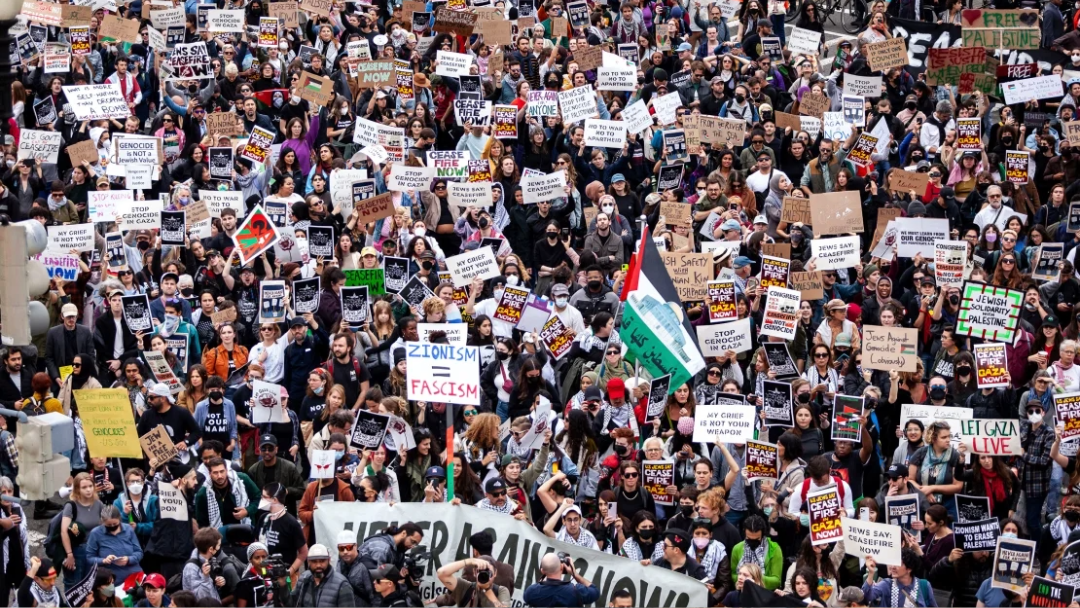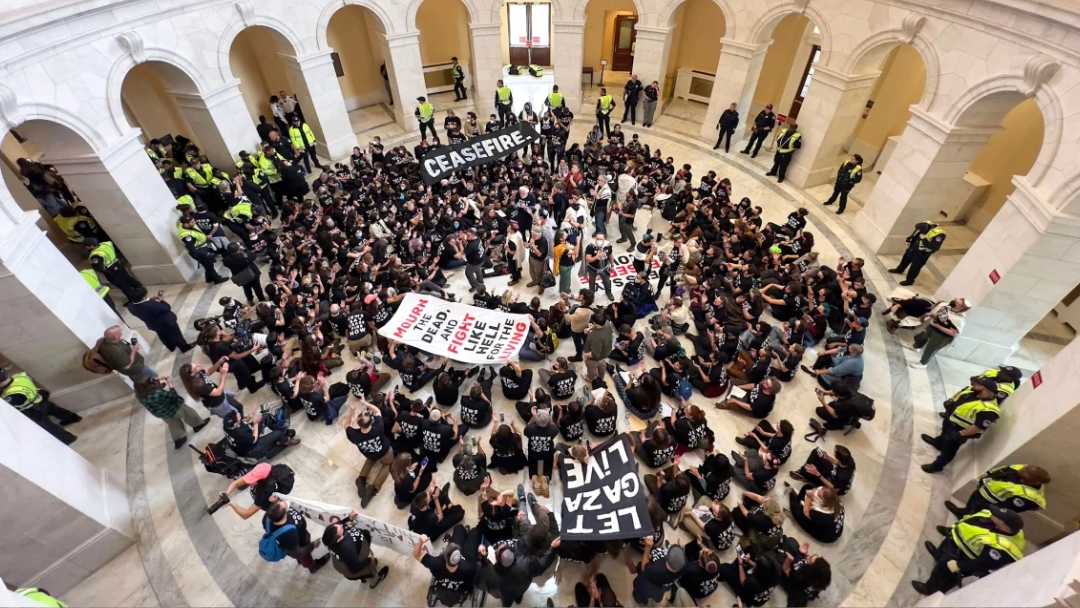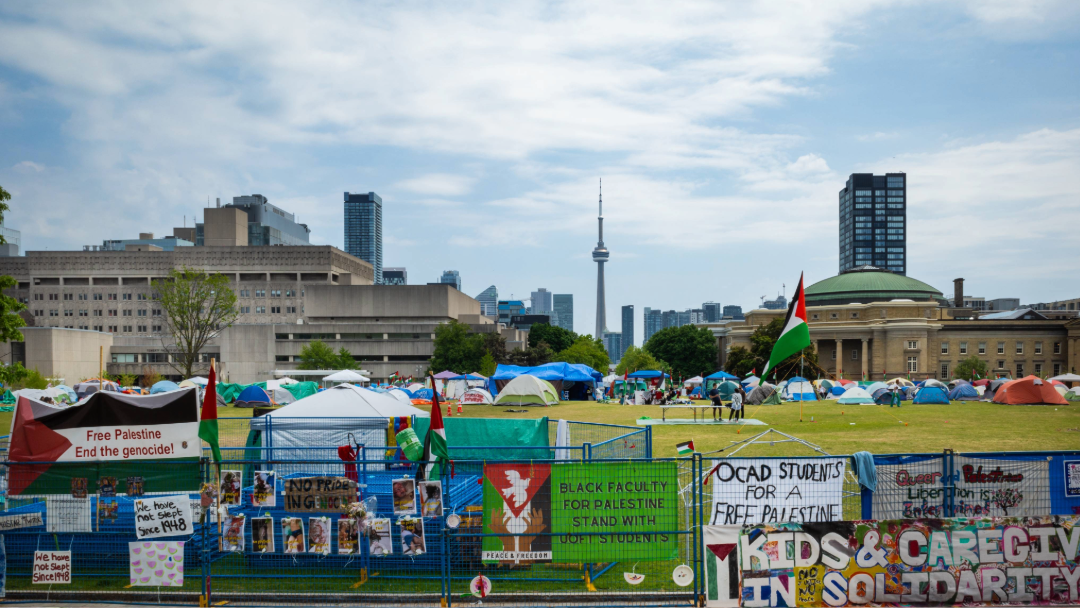Submitted by Malhis on

This perspective was contributes by Ayman Malhis- New Tactics in Human Rights MENA Senior Digital Media Coordinator
The world is witnessing a growing number of catastrophic armed conflicts. While we’re increasingly exposed to global events through the screens of our smartphones, many of these conflicts take place with minimal mainstream media attention. In 2023, there were 59 active state-based conflicts – each of these with devastating costs to the communities they touch.
In times of conflict, acts of solidarity can bring attention to violations and provide hope for victims. Nowhere is this solidarity more evident than in the current efforts of activists around the world to support the people of Gaza.
From cities to remote villages, by people of many countries and faiths, advocates around the globe have rallied to stand in solidarity for the human rights of the Palestinian people in Gaza. We hope these examples will inspire human rights defenders and civil society organizations to raise awareness and push for accountability and justice for all communities affected by conflict.
A Symbolic Act of Remembrance
In the Netherlands, the organization Plant een olijfboom (Plant an Olive Tree) has organized events in remembrance of the thousands of Palestinian children who have lost their lives in Gaza. The group showcases children's shoes in somber displays of the tragic toll of the conflict. Sadly, this display grew from 8,000 pairs of shoes in December of 2023 to 16,000 pairs in June of 2024. A sheet of paper listing the names and ages of these children conveyed a poignant message: "They have names, they had dreams."
This act of remembrance serves as an example of how visual storytelling can humanize distant tragedies and galvanize public support.
An Appeal to the Moral Authority of Decision Makers
In October of 2023, Jewish Voices for Peace, along with IfNotNow, conducted a "sit-in" inside and a rally outside the United States Capitol in Washington, DC. Their messages, "not in our name," "never again for anyone," and "ceasefire now," demanded an end to the Israeli-Palestinian conflict.
Hundreds of thousands of protestors have joined in demonstrations across the globe. In some countries, these protests have revived support for Palestinian statehood. Ireland, Norway, and Spain are three nations who have recently formally recognized the Palestinian state. This highlights how organized, collective action can leverage moral authority and cultural identity to push for policy change.

Photo credit: Jim Lo Scalzo/EPA-EFE/Shutterstock
Powerful Visual Imagery to Advocate for Change
In Lyon, France, activists transformed a fountain into a striking visual statement of protest by coloring the water red. This act symbolically denounced the killing of innocent children in Gaza, drawing attention through creative means and impactful visual imagery. Such innovative tactics can be added to our repertoire to inspire and guide other human rights defenders and civil society organizations in designing compelling campaigns.
A Public Display of Solidarity
On the 76th anniversary of the Nakba, a symbolic event unfolded in Chicago (USA). A group of individuals gathered to raise the Palestinian flag against the backdrop of the city skyline. The Nakba marks the displacement of Palestinians in May 1948 from their homeland. The symbolic act of raising the Palestinian flag served as a poignant reminder of the long struggle and resilience of the Palestinian people.
This tactic underscores the importance of public, symbolic acts in maintaining historical memory and rallying ongoing support. The actions taken in the United Nations UN General Assembly on May 10, 2024 affirmed the right of Palestinians to statehood, self-determination and to seek justice.
Protests Calling for Divestment from War and Occupation
In Canada, students at the University of Toronto staged an ongoing sit-in protest on campus grounds. Students called upon the university to divest its investments and sever financial connections with Israel.
This is one of many similar campus protests demanding accountability and action.
Some have been successful in encouraging divestment. For example, Sacramento State University announced it will no longer invest in "corporations that profit from genocide, ethnic cleansing and activities that violate fundamental human rights". Many others have made agreements with student groups to discuss their concerns on university investments.
This growing international movement of student solidarity with Palestine has amplified calls for justice within and outside of university communities. It calls for a tangible stance against the injustices faced by Palestinians.It is a tactic that can be replicated in various contexts.

Photo credit: Maksim Sokolov / Wikipedia Commons
Celebrity Influence in Support of Human Rights
In Chile, players from Club Deportivo Palestino made a powerful statement by entering the field holding the hands of "ghost" children killed in Gaza, symbolically draping them with their jackets. This poignant gesture brought the plight of Palestinian children to a global audience, showing how sports can be a platform for social justice.
Celebrities have added their voices. Australian actress Cate Blanchett, made a strong statement in support of Palestine. On the red carpet at the Cannes Film Festival, she wore a black strapless dress with a green lining. Blanchett is known for her vocal stance against Israeli aggression. She has taken to her social media and been part of the Artists4Ceasefire movement, urging U.S. President Joe Biden to press for a ceasefire. Many other celebrities have called for a ceasefire in Gaza in recent months.
Content creators and followers have taken to digital activism on the same platforms where they learn about the atrocities playing out in Gaza. For example, Instagram and TikTok users coordinated a “blockout” to unfollow celebrities and influencers that hadn’t spoken up in support. A viral TikTok campaign by Operation Olive Branch and U.S. comedian Erin Hattamer called “Pass the Hat” paired content creators with Palestinian families to share their stories and collect mutual aid.
All of these tactics show the role of influential figures in shining a spotlight on violations of human rights. The unfortunate reality is that too many global conflicts continue without the attention they deserve. Celebrities and influencers can raise awareness and more effectively advocate for change.
In Summary
All of these global acts of solidarity with Gaza reflect a collective call for justice, peace and an end to the conflict. The tactics represented here range from moving displays of remembrance to innovative acts of protest. We’re inspired by individuals and communities taking action and standing together to demand change.
Amidst these calls for action, there has been ongoing massive displacement and loss of life. The humanitarian crisis has deepened to starvation levels in Gaza. The International Court of Justice and the UN Human Rights Council have raised the alarm regarding potential genocide. There has been destruction of the life-sustaining infrastructure that will take decades to rebuild. This includes water, sanitation, food, medical services, housing, roads, schools, communication and businesses.
There is much work to be done. Human right defenders shall always continue to implement and expand the range of tactics advocating for peace and restoration. With innovative tactics for change, we can strive towards a future where peace, dignity and justice prevail.


